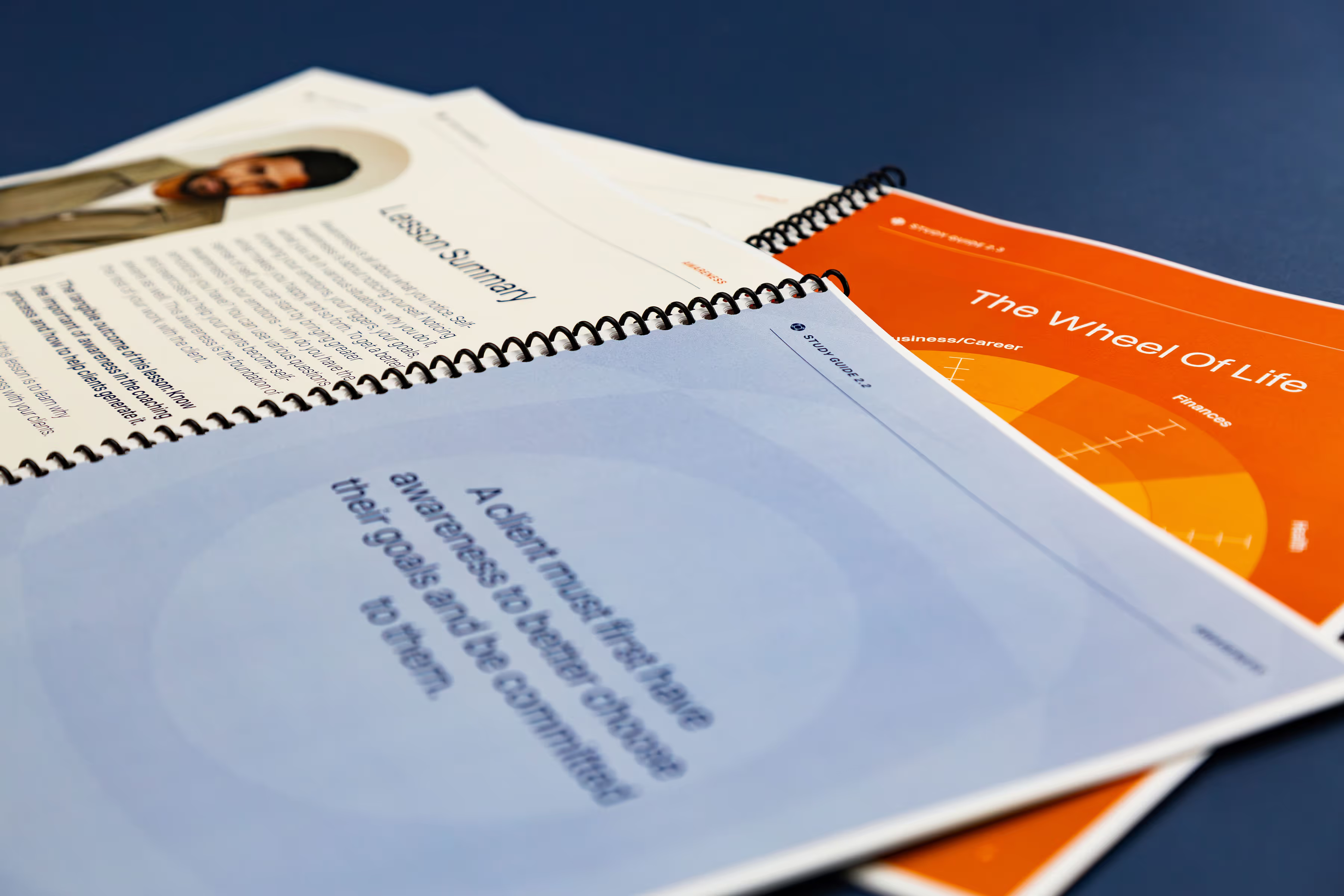Many aspiring coaches wonder: Am I supposed to give advice — or even allowed to? It’s a natural question, especially when you’re eager to help. But telling someone what to do isn’t always what they need.
Coaching takes different approaches. Some are directive, with the coach offering advice or suggesting next steps. Others, like non-directive coaching, focus on listening, reflection, and helping clients uncover their own answers.
While both methods may support growth, a non-directive approach leads to deeper, more sustainable growth. When the client leads the way, change is more lasting, empowering, and aligned with their values.
What is directive coaching?
Directive coaching involves the coach taking a more active role during sessions. They offer guidance or suggest actions the client can take to achieve their goals.
It’s a straightforward approach, often confused with consulting, and commonly used despite its limitations. While directive coaching gives clients clear advice or steps to follow, it risks disempowering them or even creating dependency.
Defined by guidance and structure
Directive coaching tends to follow a “coach knows best” approach, where the coach assumes a more authoritative role. Coaches give clients advice on how to handle challenges or make changes in their lives. They might also provide specific steps or instructions to help clients reach their goals.
This gives coaching sessions more structure and a clear sense of direction. It can be helpful in certain situations, like when a client needs an immediate solution or prefers direct guidance.
What does this look like in practice? A financial life coach might introduce budgeting tools or recommend strategies to help clients save money or invest more effectively.
Why directive coaching can limit transformation
Directive coaching might help clients experience growth and change, but the change is often short-term and surface-level. This approach may unintentionally bypass a client’s inner knowledge and wisdom, which are key to lasting transformation. As a result, clients may miss the chance to create self-driven progress that truly aligns with their values.
This style of coaching can turn into session after session of advice-giving, preventing clients from building greater self-awareness. Rather than empowering them, it may actually hold them back from making intentional, lasting changes. That disempowerment contradicts the essence of coaching: giving clients space and encouragement to gain the insight needed to build a more fulfilling life.
What is non-directive coaching?
Non-directive coaching gives clients a much more active role in creating change. Instead of giving advice, life coaches act as guides, prompting clients to reflect on their own experiences and explore their values. This approach helps clients deepen their self-understanding and uncover what they need in order to bring their lives into alignment with what matters most to them.
Focused on listening, questioning, and reflection
A non-directive coaching approach is client-led rather than coach-led. Coaches use thoughtful prompts to help clients think deeply about their lives, set goals, and assess desires, such as “What are you most passionate about?” or “What are some ways you might approach this challenge?”
Coaches create space for reflection, allowing clients to explore their own thoughts and tap into their inner wisdom. This supportive environment encourages clients to move at their own pace and arrive at insights that feel authentic and meaningful to them. Over time, this leads to greater self-awareness, which is the foundation for lasting personal growth.
What does this look like in practice? In a professional development context, a life coach might ask clients open-ended questions about their key skills, values, and interests instead of prescribing a specific career path. This helps clients gain clarity on the kind of work that would feel more aligned and fulfilling.
Why non-directive coaching leads to deeper growth
A non-directive coaching model sets the stage for more sustainable change. By letting clients lead, this self-directed approach empowers change from within, making it far more likely to last.
Coaching clients do the thinking, choosing, and acting in each session, which builds long-term confidence and a stronger sense of ownership over their progress. This method reinforces self-reliance and helps clients feel more in control of their decisions, leaning on their own internal motivation to accomplish meaningful goals.
Want to build new skills to guide clients through lasting change? Explore our certification pathway.
Key differences between directive and non-directive coaching
Both styles of coaching can support change, but they lead to very different outcomes. The client’s role shifts significantly between the two, influencing how much agency and empowerment they experience. Let’s look at these differences more closely to understand how each approach shapes the coaching experience and results for clients.
Who leads the session?
In directive coaching, the coach leads each session. They handle decision-making, offer suggestions, and tell clients how to reach their goals. The client depends on the coach to drive the change process.
In non-directive coaching, the client leads every session. Coaches take a guiding role, serving as supportive listeners rather than directing the path, so the client stays in control of their personal growth journey. This approach helps clients build the confidence and skills to lead their own lives.
What tools are used?
Directive coaching relies on advice-giving. The coach tells clients what they need to do to change their lives. For example, a directive coach might create an action plan for improving health and wellness, offering healthy meal ideas, suggesting workouts, or recommending stress-reduction techniques.
Non-directive coaching uses powerful, open-ended questions to spark self-reflection. It also emphasizes active listening, creating a space where clients feel heard and supported as they explore their thoughts, emotions, and overall well-being. Through this process, clients develop stronger problem-solving skills, build self-trust, and gain clarity, ultimately deciding how they want to move forward.
A coach using a non-directive approach might ask, “How do you define a healthy lifestyle?” or “How do you feel about your physical health right now?” These kinds of questions prompt clients to reflect and identify changes that feel right to them.
For aspiring coaches, learning non-directive methods offers a more empowering way to support clients. The Jay Shetty Certification School focuses on this approach, helping students develop the skills to guide personal growth with empathy and clarity.
Interested in studying the non-directive coaching process? Join the program today.
How growth happens
Directive coaching may prompt immediate action, but the growth it creates often lacks depth. Because coaches drive the process, clients can become dependent on external input rather than building their own internal motivation. As a result, changes might not stick once the coaching ends.
A non-directive style, on the other hand, supports lasting, self-directed growth. Clients tap into their own insight and values to guide decisions, leading to a more aligned and sustainable process. This internal clarity fuels continued personal development long after the session is over.
Learn to coach with clarity, confidence, and flexibility
The most effective coaching empowers clients to find their own answers. That’s the heart of non-directive coaching — helping clients reflect, grow, and move forward on their own terms. It takes presence, trust, and strong coaching skills, but the outcomes are deeper, more lasting transformations.
At Jay Shetty Certification School, you’ll learn how to master this approach from day one. Through expert-led training, real-time feedback, and a supportive coaching community, you’ll build the structure, presence, and coaching skills needed to confidently guide others. Rooted in non-directive coaching, the curriculum equips you to support deep self-awareness, aligned action, and meaningful growth for every client.
Ready to build the skills that lead to lasting change? Start your coaching journey with us today.





